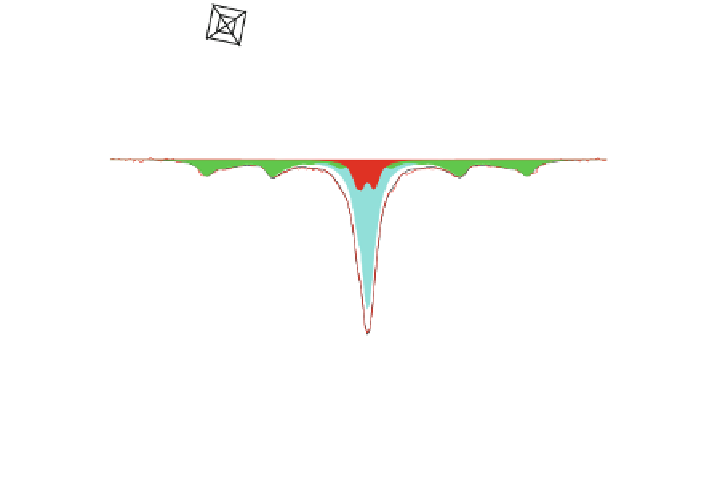Chemistry Reference
In-Depth Information
Fig. 4.25 Schematic representation of the interfacial octahedral layer between crystalline grains
and grain boundaries
-10
-5
0
5
10
V (mm/s)
Fig. 4.26
300 K
Mössbauer
spectrum
of
the
16 h
milled
ferric
fluoride
powder
and
its
decomposition
magnetic structure of the grain boundaries. As is illustrated in Fig.
4.26
, the 300 K
Mössbauer spectrum of the 16 h milled ferric fluoride powder can be also decom-
posed into 3 components: a magnetic sextet, a broadened lines quadrupolar doublet
and a single line. The magnetic sextet results from Fe moments with slow relaxation
dynamics or static Fe moments (the later corresponding to the highest hyperfine field
values which well compare that characteristics of r-FeF
3
crystalline phase). How-
ever, when the relaxation phenomena are faster (smaller or magnetically uncoupled
crystalline grains), the hyperfine structure becomes a broadened single line. Finally,
the quadrupolar component which is described by a distribution of quadrupolar
splitting the profile of which well compares that of the pure amorphous phase, is
assigned to the presence of grain boundaries: indeed the expected topology based on
a random packing of corner-sharing octahedral units induces a cancellation of
magnetic ordered structure, as compared to the freezing temperature (about 30 K) of
the amorphous phase prepared by vapour quenching onto a substrate, corresponding
to the transition from the paramagnetic into the speromagnetic states.















































































































